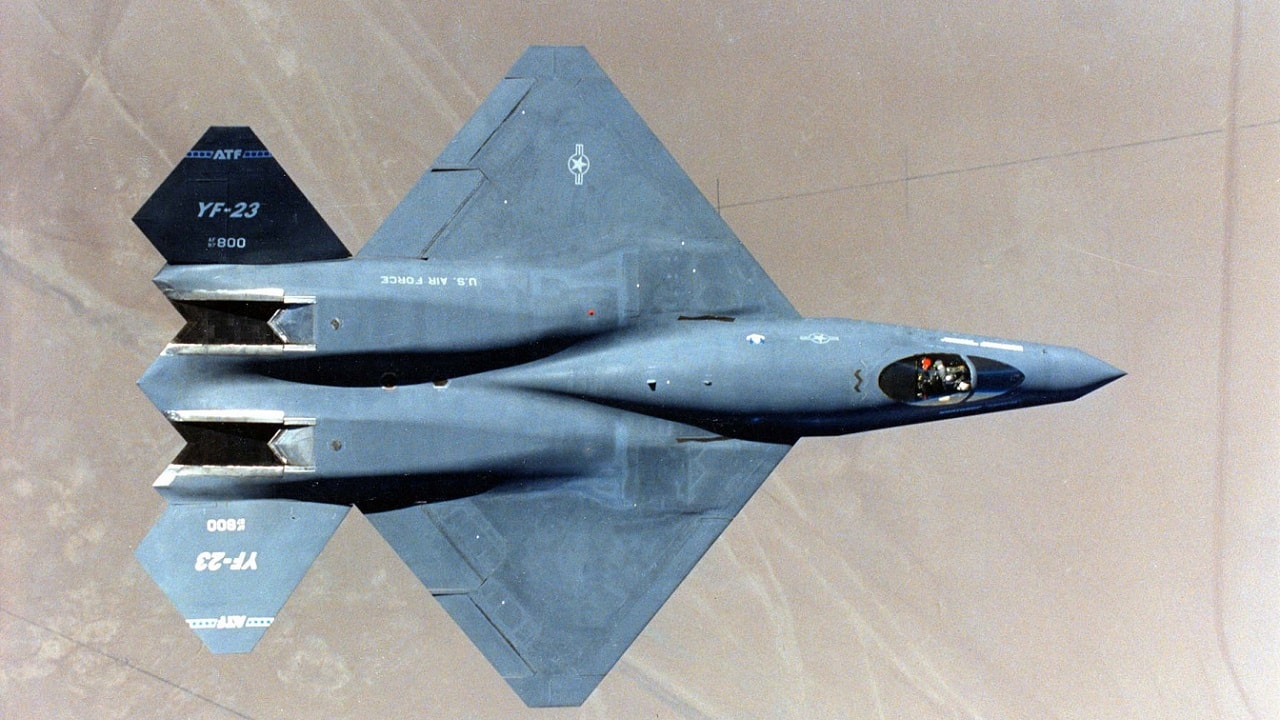The YF-23 Fighter: An Expert Analysis with Additional Comments from a Former George W. Bush Senior Defense Offical: The late, great Sean Connery offered several classic “one-liners” in his lengthy career, and among the best was in 1996’s The Rock, when as a former MI-6 operative, he states bluntly, “Losers always whine about their best. Winners go home and f*ck the prom queen.”
The YF-23 Story
Lockheed Martin’s F-22 Raptor can be seen as the winner in this case, and while it never had such relations with a prom queen, it has earned a reputation as the most capable air superiority fighter ever to fly. The “loser” was the Northrop-McDonnell Douglas YF-23, an experimental aircraft that competed in the late 1980s and early 1990s against the YF-22 in the United States Air Force’s Advanced Tactical Fighter (ATF) program.
The goal of the ATF program was to find a replacement for the F-15 Eagle air superiority fighter and to address the perceived threat from the Soviet Union’s Sukhoi Su-27 and Mikoyan MiG-29. Several companies originally submitted design proposals, and in 1986, the Air Force awarded demonstration contracts to two competing teams. The Northrop-McDonnell Douglas YF-23 went up against the Lockheed-Boeing-General Dynamics YF-22.
Of course, the YF-23 was nothing to whine about.
Meet the Black Widow II and Gray Ghost: Expert Analysis
The YF-23 emphasized its stealth characteristics and featured a distinct design from the YF-22. The Northrop aircraft has often been described as having an “almost pancake-like airframe structure with blended wing elements.” Its diamond-shaped wings were meant to reduce aerodynamic drag at transonic speeds.
To lessen the weight while increasing the stealth, the Northrop-led team opted against using thrust vectoring for aerodynamic control that was used with the Lockheed prototype.
Two different prototypes of the YF-23 were built, each with a different set of powerplants – as one element of the development phase of the program was to evaluate two experimental turbofan engines. Prototype Air Vehicle 1 (PAV-1), which was painted charcoal gray and unofficially nicknamed “Spider” but was more commonly known as the “Black Widow II” – to honor the Northrop P-61 Black Widow flown during World War II. It was equipped with the Pratt & Whitney YF199 engines. Prototype Air Vehicle 2 (PAV-2), which was painted in two shades of gray and soon earned the nickname “Gray Ghost,” was powered by a pair of General Electric YF120 engines.
Each of the two prototype planes proved to be fast and stealthy.
In both configurations, the single-seat aircraft was 67 feet, 5 inches in length; had a wingspan that was 43 feet, 7 inches; and a wing area of an impressive 900 square feet.
The YF-23’s low profile and classified skin material on the airframe were said to be nearly 100 percent undetectable by nearly any radar system of the period. At the same time, the “supercruise” function also allowed the fighter to achieve sustained supersonic flight without the use of the afterburner. Its maximum speed was Mach 2.2.
The ATF specs called for the YF-23 to be armed with a fixed 20mm M61 Vulcan, while internal bays could house four AIM-7 Sparrow or AIM-120 AMRAAM medium-range air-to-air missiles, as well as a pair of AIM-9 short-range missiles. It wasn’t just fast, it was well-armed.
Head-to-Head With the Future Raptor
Throughout the ATF competition, the Northrop YF-23 was seen to be very evenly matched with the YF-22, and more than held its own. In many ways, it certainly did its “best,” as it had a top speed of 1,451mph to the YF-22’s 1,599mph, but the Northrop design had a longer range and a higher ceiling – 2,796 miles maximum range and a ceiling of 65,000 feet. By contrast, the YF-22 had a range of 2,000 miles and a ceiling of 50,000 feet.
Where the YF-22 had the edge however was in agility, something that is of the utmost of importance in a fighter aircraft. The YF-22 “Lightning II” – later to become the F-22 “Raptor” while the “Lightning II” designation was reused with the F-35 Joint Strike Fighter – was simply better in a dogfight, and that was enough to convince the Air Force that it would be the better of the two.
Worthy of a Museum
Rarely does a runner-up get its due in any “Hall of Fame,” and any notoriety is usually focused on the fact that they were a worthy competition for the winner. In this case, the YF-23 was a loser – but perhaps one of the best losers in aviation history.
That is why in 1996, both YF-23 airframes were transferred to museums. The YF-23A PAV-1 is now on display in the Research and Development hangar at the National Museum of the United States Air Force. It serves as a testament that sometimes the solid design can still fall short.The YF-23A PAV-2 was on display at the Western Museum of Flight until 2004, when it was reclaimed by Northrop Grumman and used as a display model for the YF-23-based bomber, but then returned to the museum in 2010 where it is again on display.
Finally, as the Lockheed Martin F-22 “Raptor” program was cut short in 2009, it could be argued there were no real winners in the ATF competition.
What the Experts Told 19FortyFive
“I have a special place in my heart for the YF-23,” explained a former George W. Bush Senior U.S. Defense Department official in an interview with 19FortyFive. “The YF-23, or what would have been the F-23, had some amazing capabilities. I would argue the YF-23 was the better plane and that the Air Force made the wrong call. However, the F-22 is one amazing fighter. At the end of the day, there may have been no wrong choice in the first place.”
YF-23: A Story in Photos
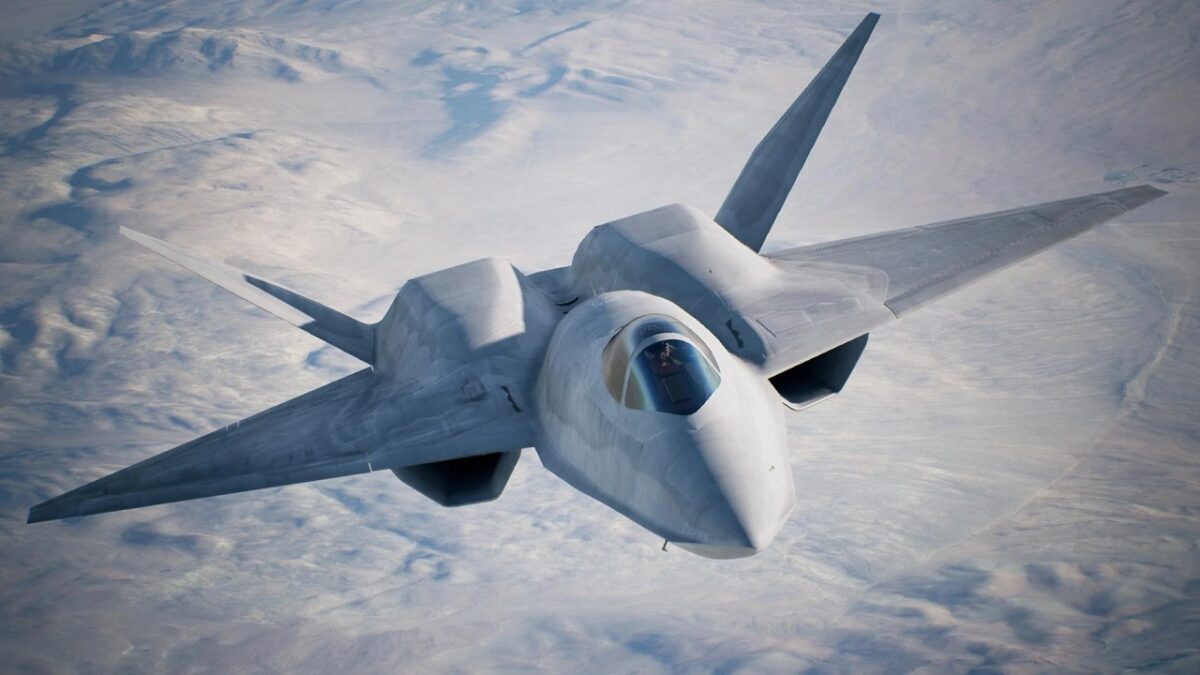
YF-23. Image Credit: Screenshot/Artist Rendering of Possible Final Design.
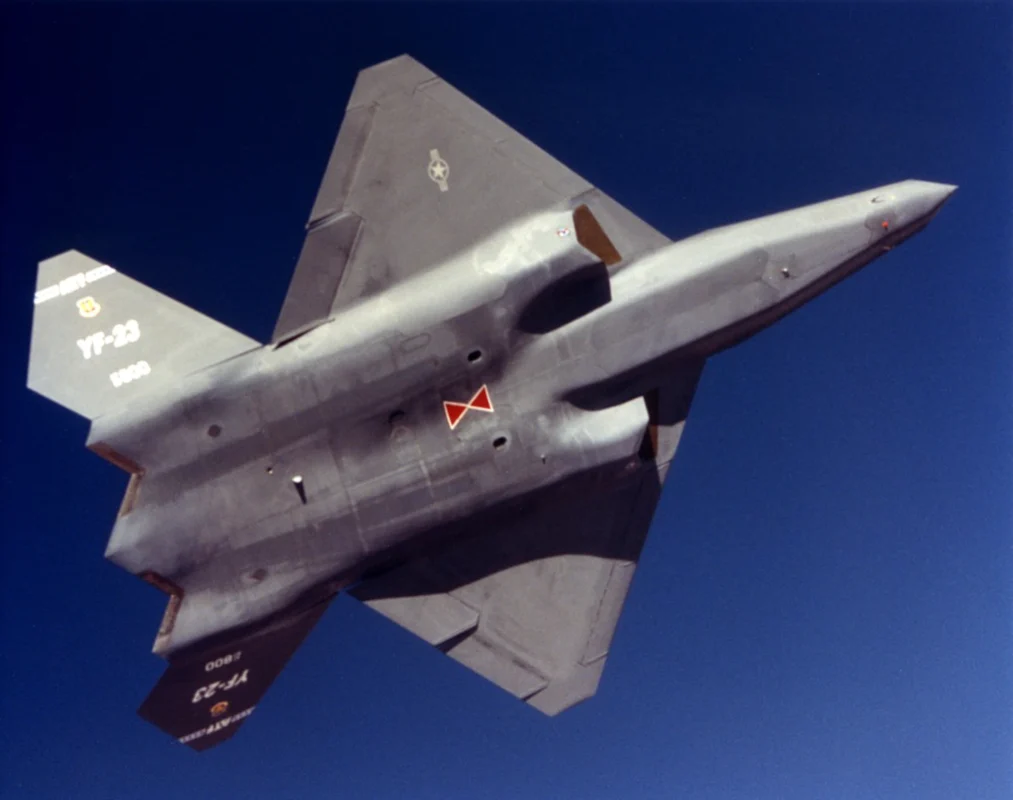
To prevent injury to ground personnel while under the aircraft, the ram air scoop was highlighted with a set of red and white triangles for visibility. The unintended coincidence looked like a Black Widow hourglass while the aircraft was in flight.
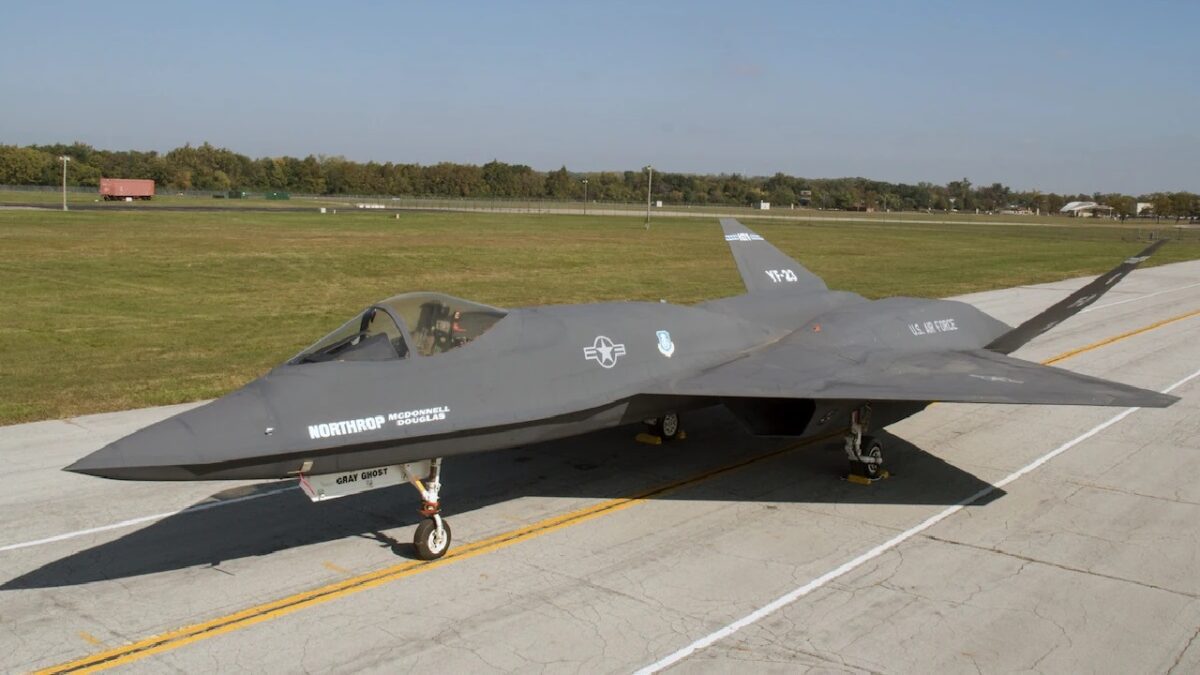
YF-23. Image Credit: Creative Commons.
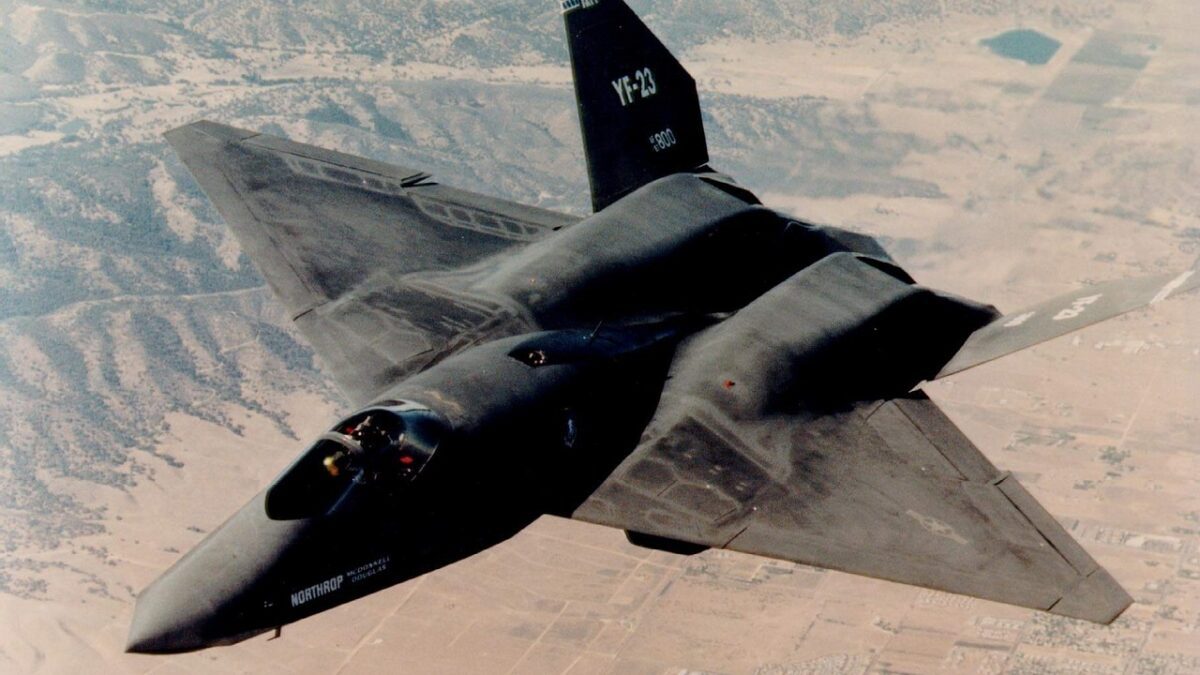
YF-23 stealth fighter, which could inspire the design of the NGAD.
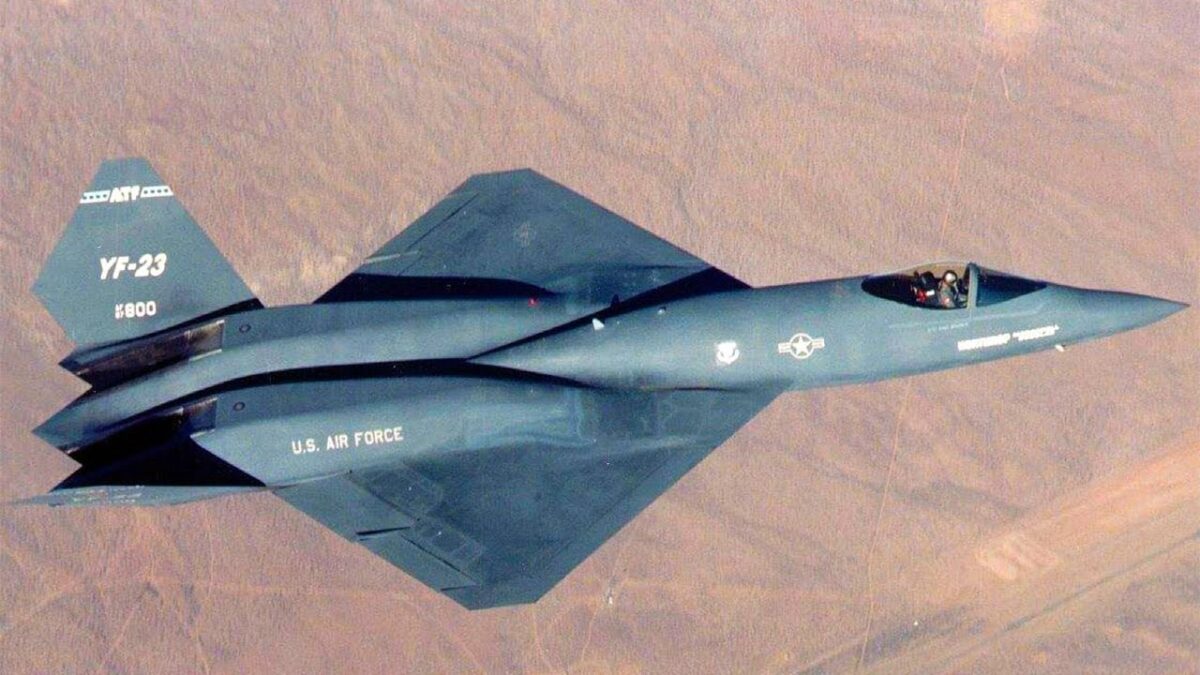
Image of YF-23 in fight. Image Credit: Creative Commons.
Expert Biography: A Senior Editor for 1945, Peter Suciu is a Michigan-based writer who has contributed to more than four dozen magazines, newspapers, and websites with over 3,000 published pieces over a twenty-year career in journalism. He regularly writes about military hardware, firearms history, cybersecurity, and international affairs. Peter is also a Contributing Writer for Forbes. You can follow him on Twitter: @PeterSuciu.

